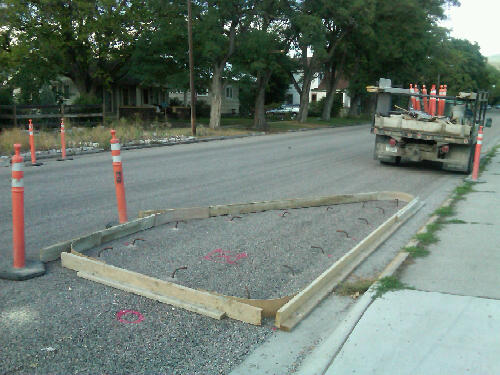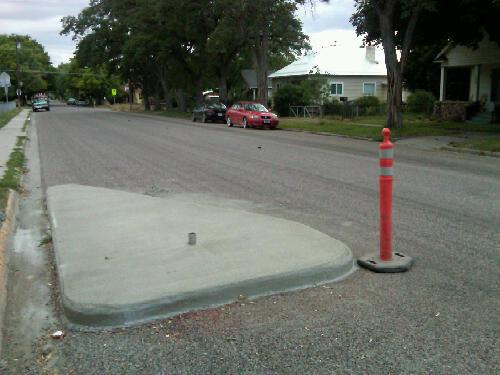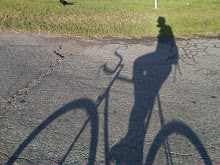I had a conversation with someone - who shall remain nameless - about my little project and the general sentiment that I got from that person was that what I am trying to do here is ridiculous, a waist of my time and my life. Among many pearls of wisdom I was offered were; real people that need to feed their families drive cars, adults don't ride bikes, cyclists don't pay for the infrastructure they use, and the hypocrisy of going carfree when most things I'm buying are trucked in anyway.
Thats a long list of grievances and goes to illustrating the attitudes that advocates of alternative transportation are up against. I don't even really know where to begin with all these, and I've had ample time to think and reflect on what was said before sitting down to write this post.
First off, I'm not stupid enough to believe that all people in every part of the world can live their lives without owning a car. But what I see as the challenge is moving to a reality in which people don't have to own a vehicle to be a productive member of society. Already much of Europe is like this, but here in America - because of our auto-centric urban growth patterns of the last 70 years - there is plenty of opportunity for people to change their behaviors.
Secondly, I consider myself to be a pragmatist, meaning that I believe we need to find a way to reduce our individual environmental impact while continuing to use the technological advances of the industrial and information revolutions. This person said they could only respect someone attempting what I am doing if they went to the extreme and moved to a plot of land and lived a self contained life off the land. While yes this would significantly drop my carbon emissions and ecological footprint, no matter what humans do there will always be an environmental impact. The fact is that this is not an option anymore. The Earth has a population of over 6 billion people, so there is no possibility of everyone having 40 acres all to themselves. We are also now living in a mostly urban world, with over 50% of the worlds population living in urbanized areas. And while this situation creates many challenges ti also creates many unique opportunities in terms of better urban design and transportation.
Remember that the approach of living a self contained life has already been tried, and for various reasons, failed to hold the attentions of Americans other than a small die-hard minority. I have written in
previous posts about the failings of the political movements of the 60's. The attitude of turning away from civic culture as so eloquently captured by Timothy Leary, "Turn on, tune in, drop out," failed. When an attempt to turn this mantra into reality - in the form of communes,
Haight-Ashbury, etc. - the people who flocked to there new social experiments (new to America) didn't last very long. The model of society being proposed was to radical a departure for most Americans to find appealing, leading to a large backlash the produced Reagan,
Gordon Gekko, and yuppies.
This is illustrated yell - in the rather terrible movie -
Rude Awakening in which Cheech (without Chong) is a radical revolutionary hippie from the 60's that is forced into exile in South America when the government raids the commune he was a part of. The friends he leaves behind are transformed during his absence into everything they were fighting against and when he returns in the 80's he finds they are aspirational elitist New York yuppies.
We must build a mainstream movement of people that are interested in environmental and social justice issues. Thats a big goal, but if you give people easy choices that allow them to feel good knowing they are doing something positive, and spread that across millions of people, there is a chance for a real impact.
Of course this means educating people, and since we live in a Capitalist system, that mainly means education about the choices people make every time they consume something. Being a pragmatist, I see no contradiction or hypocrisy in choosing not to drive while many of the things I consume continue to be shipped into Missoula from many thousands of miles away. I have very little control over where things are manufactured, but I do have control when it comes to local transportation. And this being, mostly, a free market economy, I gladly choose to commute by bicycle.
A good example of this pragmatism is the argument over food miles and the true cost of our food and agricultural system. Localivores often argue for the 100 mile diet, but here in Missoula that would mean NO BREAD. A recent article I read (I wish I had a link) stated that a study found that only 20% of a food products environmental impact comes from transportation while the majority comes from the excessive use of chemical fertilizers, pesticides, herbicides, and diesel consumed by a tractor. So given a choice, its between organic that was trucked in and something local from a traditional agribusiness farm, the organic wins out in terms of lessening the products impact.
While its nice to stick to principles, taking the pragmatic approach allows many more people to participate in a given social movement. Rigid adherence to principals and a radical approach are what brought the political and environmental movements of the 60's to a halt and actually set them back about a decade.
So given the choice of being an appathetic consumer, turning my back on civic life, or taking the middle road and being pragmatic about the choices I make in my daily life, I'll choose to be pragmatic. Already, the little changes I have made have resulted in a significant reduction of my ecological footprint (which I'll go into more detail in a later post). My carbon emission are reduced by about 50% from going carfree while my overall ecoligical footprint has been lowered by approximately 1/3. Other than not driving, I haven't radically changed my behavior its just that the little things I have changed add up.























